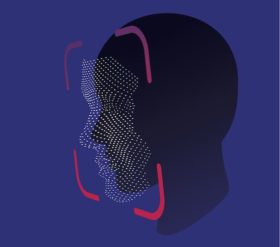
Helen Sandison, Senior Engineer, CENSIS
November 2018 saw the launch of the new CENSIS Vision Lab, a dedicated facility in our Glasgow offices to help businesses adopt or deliver innovative computer vision or imaging solutions. We see opportunities in sectors from aerospace to oil & gas to food and drink.
CENSIS is uniquely positioned to help kickstart or accelerate businesses’ use of computer vision due to our connections with academia and industry and the funding we can bring to innovative technology projects. Our in-house technical and business development teams can also provide engineering support and consultancy.
A 60-second guide to computer vision
Given that we’re looking to ‘democratise’ computer vision technology with the Vision Lab, it’s useful to summarise what computer vision is all about.
Broadly speaking, computer vision is any computation involving visual content – images, videos, anything with pixels involved.
It’s the process of using machines to see, identify, analyse and understand imagery.
Any application that involves understanding pixels through software can be labelled as computer vision.
Computational processing of images has been around in some format since the 1960s. But recent advances in machine learning as well as leaps forward in data storage, computing capabilities and cheap, high-quality camera devices have led to major improvements and new opportunities.
Commercial uses and applications
The core techniques of computer vision–all of which have developed significantly in recent years–are:
- Event detection
- Object recognition
- Object tracking
- Motion estimation
- Image classification
- 3D reconstruction
These techniques can be used for many different applications in different environments, with the result that computer vision technology is well on the way to being ubiquitous:
- Autonomous vehicles – navigation, control, route planning, obstacle detection, traffic sign detection
- The human face – personal device access, targeted advertising, surveillance, biometrics, photo tagging
- Gaming – gesture recognition and control, vision-based user inputs, action recognition, eye tracking
- Manufacturing – predictive maintenance, package inspection, reading barcodes, track and trace, handwriting analysis
- Medical images – 3D visualisation and animation, 3D image segmentation, tumour detection, medical diagnosis methods
- Remote sensing – land use recognition and identification, multi sensor fusion, crop detection, atmospheric visibility, pollution monitoring
- Surveillance – object detection, recognition and tracking, people counting, crime prevention, home security
- Transport – pedestrian detection, driver monitoring, lane alert, parking assistance, video-based tolling, number plate recognition, traffic surveillance.
How our Vision Lab fits into the picture
The hardware and software we have in the Vision Lab greatly develops our technical capabilities in computer vision and related fields, and includes:
- Development kits for image sensing, machine learning
- 3D time of flight sensor for industrial machine vision applications
- Embedded vision cameras
- PC custom built and optimised for image processing, machine vision and applications that require high processing speed
- MVTec Halcon, a comprehensive standard software package for machine vision industries, with capabilities in areas such as analysis, matching, measuring, identification, 3D vision and deep learning algorithms.
Having engaged with the University of Glasgow’s Computer Science department to develop project ideas, we see exciting scope to use the lab to support projects in image processing, machine vision, object detection and tracking, embedded vision, motion sensing, machine learning and many more applications across a range of areas.
In effect, the Vision Lab will take a similar approach to our IoT Centre – helping SMEs with product development or product enhancement around the new technology, through funding, collaboration, consultancy and access to equipment and expertise. As with the IoT Centre, we’re looking to engage with end-users of the technology, not just developers or those already at the cutting-edge.
Talk to us
Tell us about your imaging challenges, help us shape our workshop programme, and guide us in providing a service that will be useful to you.
We’re particularly keen to talk to companies throughout Scotland and further afield with imaging or vision-based challenges who are interested in product development or enhancement.